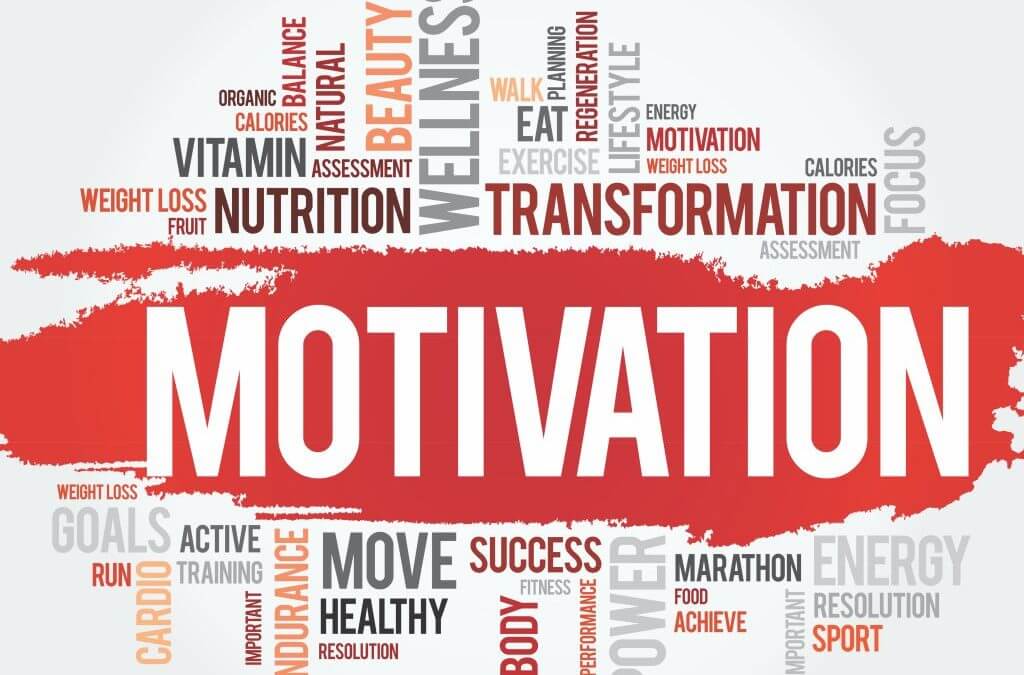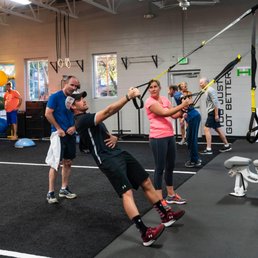
Your body needs some time to heal from the strains and stresses of your training session. During this time, the fibroblasts in your muscle cells are active and repair the damages caused by the exercise. It is essential to give your muscles time for healing and to not overuse any muscle tissue that has been exercised. In your free time, you should do as many things as possible, including eating, relaxing, and sleeping.
It is important to pay attention how your body reacts after a workout. If you feel muscle soreness for longer than three to four weeks, it's a sign that your body is not responding well to the workout. This is an indication that you need to increase your workout recovery. As you become stronger and lose more weight, your recovery strategy will need to be adjusted. Remember that your ideal recovery strategy for a workout will change over time. This could be weeks, months or even years. Here are some tips to optimize your recovery.

For anyone, a post-workout recovery program is beneficial. It may differ for different types of exercise and different age groups. Teenagers, young adults, and those with lower fitness levels may require more time to recover from a workout. Also, those who are just starting to engage in physical activities or aren't in good health may need more recovery time after exercise. Fit people require more time to recuperate than those in great shape.
A good post-workout recovery plan starts with a proper warm up, mobility routine, stretching, and stretching. You can speed up your recovery by getting your heart rate to a resting state. It will also help bring blood to your muscles. This can be achieved by static stretching, yoga, and foam rolling. An Epsom salt bath is another option if you feel sore after a tough workout.
Post-workout recovery programs should focus on the right type of recovery. Your body will not cramp if you ensure you are getting enough protein and calories. This will also aid in muscle recovery. If you want to maximize the benefits of your workout, try to take a short break from your workout and eat a healthy meal right after. A healthy meal will give you energy to continue your workouts.

Post-workout recovery programs should include moderate physical activity as well as a healthy diet. It's important to get as much protein and vitamin D as possible, and to do so, you should avoid working the same muscle group twice. It's also important to take time for stretches and yoga. It's important to not overwork your muscles during these days.
FAQ
How does weight change with age?
How do I know if my bodyweight changes?
When there is more muscle mass than fat, weight loss can occur. This means that calories must be consumed at a rate greater than energy. A decreased level of activity is the main cause of weight loss. Other causes include illness, stress, pregnancy, hormonal imbalances, certain medications, and poor eating habits. Weight gain occurs when there is more fat than muscle mass. It occurs when people eat more calories than what they use in a given day. Common reasons include overeating, increased physical activity, and hormonal changes.
The main reason why our bodies lose weight is because we consume fewer calories than we burn. Exercise regularly increases your metabolism rate, which allows you to burn more calories every day. But this doesn't guarantee that we'll lose weight. All that matters is whether we're losing weight or gaining muscles. We will lose weight if we burn more calories than we consume. But, if we consume far more calories than what we burn, then we actually store them as fat.
As we age, our ability to move around is slower and we are less mobile. We also tend eat less than we used to. As a result, we gain weight. On the flip side, we tend to have more muscle mass so we look bigger than we really are.
There's no way to tell how much weight you've lost unless you weigh yourself every week. There are many options for measuring your weight. There are many ways to measure your weight. You can check your waist, hips, thighs, arms and legs. Some prefer to use bathroom scales, while others prefer tape measures.
If you want to track your progress, you should try weighing yourself once a week and measuring your waistline once a month. You can also take pictures of yourself every few months to see how far you've come.
You can also find out how much you weigh by looking up your height and weight online. If you're 5'10' tall and weigh 180lbs, you'd likely weigh 180lbs.
How do I get enough vitamins?
Most of your daily vitamin requirements can be met by diet alone. Supplements are an option if you are low in any vitamin. You can take a multivitamin supplement that contains all the vitamins you need. You can also purchase individual vitamins at your local drugstore.
If you are concerned about getting enough nutrients, talk to your doctor about what foods contain the best sources of vitamins. Dark green leafy vegetables like spinach, broccoli and kale, as well as turnip greens and mustard greens such as turnip and mustard greens and bok choy, are rich in vitamins K & E.
Ask your doctor if there is any doubt about how much vitamin you should be taking. He or she will recommend the appropriate dosage based on your medical history and current health status.
What is the difference among a virus or a bacterium and what are their differences?
A virus can be described as a microscopic organism that cannot reproduce in another cell. A bacterium (or single-celled organism) reproduces by splitting itself into two. Viruses can be as small as 20 nanometers, while bacteria can grow up to 1 micron.
Viruses are spread via contact with infected bodily liquids such as urine, saliva, semen and vaginal secretions. Bacteria are often spread via direct contact with contaminated surfaces or objects.
Viral infections can also be introduced to our bodies by a variety of cuts, scrapes or bites. They may also enter through the nose, mouth, eyes, ears, vagina, rectum , or anus.
Bacteria can get into our bodies through cuts, scrapes and burns, insect bites, or other skin breaks. They can also get into our bodies via food, water or soil.
Viruses and bacteria both cause illness. Viruses can not multiply within the host. So they only cause illnesses when they infect living cells.
Bacteria may spread to other people and cause sickness. They can infiltrate other parts of the body. They can even invade other parts of the body, which is why antibiotics are necessary to eradicate them.
What is the difference between a calorie or a kilocalorie.
Calories are units that measure how much food has energy. A calorie is a unit of measure. One calorie is the amount of energy required to heat one gram water one degree Celsius.
Kilocalories are another term for calories. Kilocalories measure in thousandths a calorie. For example, 1000 calories equals one kilocalorie.
What are the top 10 healthy habits?
-
Breakfast is a must every day.
-
Don't skip meals.
-
Be balanced.
-
Get lots of water.
-
Take care of yourself.
-
Get enough sleep.
-
Avoid junk foods.
-
Get at least one form of exercise each day.
-
Have fun
-
Meet new people.
Do I have to count calories?
Perhaps you are wondering what the best diet is for you. or "is counting calories necessary?" The answer is dependent on several factors like your current health status, personal goals, your lifestyle, and your preferences.
The Best Diet For Me: Which One Is Right?
The best diet depends on me, my health, my goals, my preferences and my overall lifestyle. There are many diets available, some good and others not so good. Some diets work better than others. What can I do to make the right choice? What can I do to make the right decision?
These are the questions that this article attempts to answer. The article starts by introducing the many types of diets currently available. Then, the pros and cons of each type of diet are discussed. The final step is to determine which one is right for you.
Let's look at some of the main types of diets to get started.
Diet Types
There are three main types: low-fat, high-protein, or ketogenic. Let's talk about them briefly.
Low Fat Diets
A low-fat diet is one that limits the intake of fats. This is achieved by reducing saturated fats like butter, cream cheese, and other dairy products. You can replace them with unsaturated oils (olive oil and avocados) Low fat diets are often recommended to those who wish to lose weight quickly. This kind of diet could cause problems like constipation or heartburn and indigestion. A person may also experience vitamin deficiencies if they don't get enough vitamins.
High Protein Diets
High-protein diets limit carbohydrates and favor proteins. These diets have higher protein levels than other diets. These diets are designed to build muscle mass and help you burn more calories. However, they might not provide enough nutrition for those who need to eat frequently. They can also be very restrictive so they may not be suitable for everyone.
Ketogenic Diets
Ketogenic diets are also known as keto diets. They are high-fat and low in carbs and protein. They are commonly used by athletes and bodybuilders, as they allow them train harder and more frequently without getting tired. You must adhere to all side effects, including fatigue, headaches, nausea and headaches.
Statistics
- WHO recommends consuming less than 5% of total energy intake for additional health benefits. (who.int)
- Extra virgin olive oil may benefit heart health, as people who consume it have a lower risk for dying from heart attacks and strokes according to some evidence (57Trusted Source (healthline.com)
- According to the 2020 Dietary Guidelines for Americans, a balanced diet high in fruits and vegetables, lean protein, low-fat dairy and whole grains is needed for optimal energy. (mayoclinichealthsystem.org)
- In both adults and children, the intake of free sugars should be reduced to less than 10% of total energy intake. (who.int)
External Links
How To
How to stay motivated and stick to healthy eating habits and exercise
Here are some motivational tips to stay healthy
Motivational Tips to Stay Healthy
-
Make a list with your goals
-
Realistic goals
-
Be consistent
-
Reward yourself for reaching your goal
-
Don't give up if you fail at first
-
Have fun